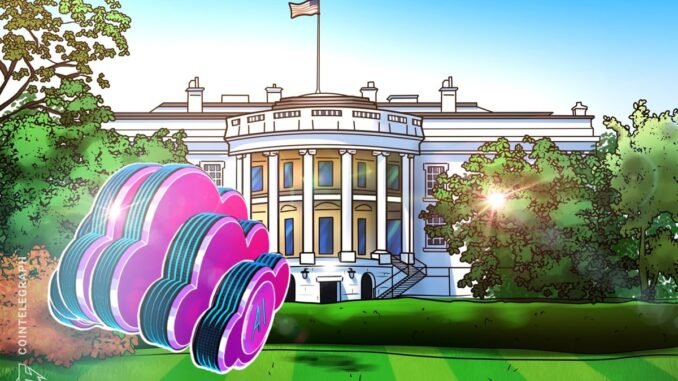
US President Donald Trump released his plan to make the United States the “world capital” of artificial intelligence (AI) on Wednesday, outlining steps to ease data center regulations, revise federal content standards and prioritize government contracts for select AI developers.
The report, published by the White House, presents a three-pillar plan, with initiatives to encourage open-source AI development for applications across law, healthcare, defense, science, education and manufacturing.
One of the plan’s key policy goals is to “protect freedom of speech” and online expression within AI models. According to the document, the free speech initiative will be led by the Department of Commerce (DOC), which will work with the National Institute of Standards and Technology (NIST) to “eliminate references to misinformation, Diversity, Equity, and Inclusion, and climate change.”
Despite the stated goal of encouraging open-source AI development, the report also outlined a provision to award government contracts exclusively to “frontier large language model (LLM) developers.” The report did not define what qualifies as a “frontier” AI developer.
Trump has repeatedly said that he wants to make America the “world capital” of AI development, which includes strengthening the US energy grid to provide the immense power needed for AI.
Related: Why I won’t invest in companies that ignore AI — Kevin O’Leary
Infrastructure and energy development
The Trump administration wrote that accelerating AI infrastructure through the construction of data centers is central to the plan.
This expedited approval process for AI data centers includes re-categorizing the high-performance computing facilities under the revamped National Environmental Policy Act (NEPA) and relaxing the permitting requirements under existing regulations.
Under the plan, AI data centers would qualify for expedited permitting approval, despite previous stipulations laid out in the Clean Air Act, the Clean Water Act and the Comprehensive Environmental Response, Compensation, and Liability Act.
Additionally, the strategy seeks to “stabilize the grid of today as much as possible,” by developing alternative energy-generation technologies such as nuclear fusion and fission.
Finally, the plan contains objectives to bring semiconductor manufacturing, central to the creation of AI and computer processors, back to the US.
Control global AI development through export controls and sanctions
“To succeed in the global AI competition, America must do more than promote AI within its own borders. The United States must also drive adoption of American AI systems, computing hardware, and standards throughout the world,” the report reads.
This includes strengthening AI export controls and trade policies through a collaboration between the US Trade and Development Agency, the Export-Import Bank, the US International Development Finance Corporation, the Department of State and the Department of Commerce.
Magazine: UK’s Orwellian AI murder prediction system, will AI take your job? AI Eye

